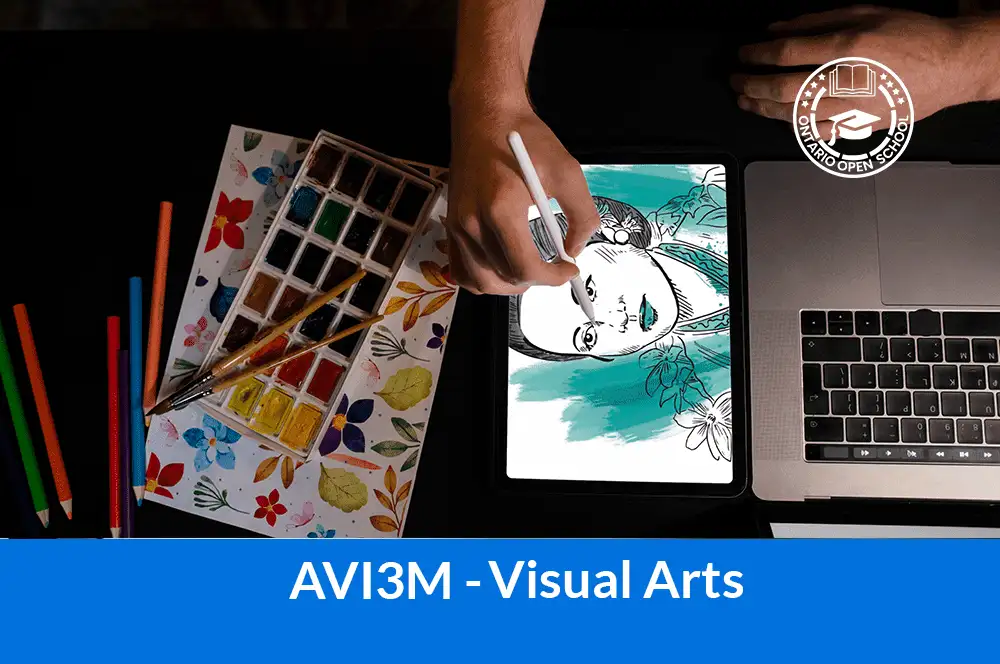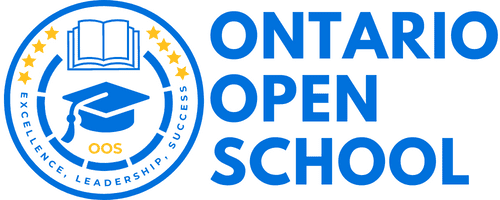- info@ontarioopenschool.com
- 647-494-4499
-
Unit 100 - 29 Gervais Drive, North York, ON.
M3C 1Y9
Copyright 2024 Ontario Open School Inc. All Rights Reserved.
This course enables students to further develop their knowledge and skills in visual arts. Students will use the creative process to explore a wide range of themes through studio work that may include drawing, painting, sculpting, and printmaking, as well as the creation of collage, multimedia works, and works using emerging technologies. Students will use the critical analysis process when evaluating their own work and the work of others. The course may be delivered as a comprehensive program or through a program focused on a particular art form (e.g., photography, video, computer graphics, and information design).
Unit Order | Unit Name | Suggested Time |
|---|---|---|
| Unit 1 | Art Theory and Graffiti Art: students will
| 14 hours |
| Unit 2 | Drawing: Student will
| 22 hours |
| Unit 3 | Water Colour: The students will
| 15 hours |
| Unit 4 | Surrealism and Hand: The students will
| 22 hours |
| Unit 5 | Acrylic Painting: The students will
| 27 hours |
| Final Evaluation 30% | Final Project Final Exam | 8 hours 2 hours |
| Total | 110 Hours |
A wide variety of instructional strategies are used to provide learning opportunities to accommodate a variety of learning styles, interests and ability levels. These strategies include, but are not limited to:
Purpose
The primary purpose of assessment is to improve student learning. Assessment relates directly to the expectations for the course.
A variety of assessments for and as learning are conducted on a regular basis to allow ample opportunities for students to improve and ultimately demonstrate their full range of learning and for the teacher to gather information to provide feedback. Assessment tasks relate to the success criteria set out in lesson plans. Success criteria allow students to see what quality looks like.
Evaluation is the process of judging the quality of student work in relation to the achievement chart categories and criteria and assigning a percentage grade to represent that quality. Evaluation is based on gathering evidence of student achievement through:
Assessment for Learning – we provide feedback and coaching. Assessment FOR Learning is the process of seeking and interpreting evidence for the use of learners and their teachers to decide where the learners are in their learning, where they need to go, and how best to go there.
Assessment as Learning – we help students monitor progress, set goals, reflect on their learning
Assessment AS Learning is the process of the explicit fostering of students’ capacity over time to be their own best assessors, but teachers need to start by presenting and modeling external, structured opportunities for students to assess themselves.
Assessment of Learning – we use assessments to provide evaluative statements about student achievement. Assessment OF Learning is the assessment that becomes public and results in statements of symbols
(marks/grades/levels of achievement) about how well students are learning. It often contributes to pivotal decisions that will affect students’ future.
ASSESSMENT TOOLS
| Assessment and evaluation in this course will be continuous throughout the term and will include a variety of methods. | ||
| Assessment As Learning | Assessment For Learning | Assessment Of Learning |
|
Student Product: Learning Logs KWL Chart
|
Student Product:
Assigned Questions / Worksheet/ Homework Diagnostic Quiz |
Student Product: Unit Culminating Activities Unit Tests Independent Study Project Final Exam |
|
Observation: Self-Monitoring |
Observation:
Group and Individual Presentation
|
Observation: PowerPoint / Poster/ Media Presentation
|
|
Conversation: Reflective Discussion and Online Communication |
Conversation:
Student Teacher Conferences Q/A Session Online Communication
|
Conversation: Student- Teacher Conferencing |
Resources
http://www.edu.gov.on.ca/eng/policyfunding/growSuccess.pdf
Grading
Weighting of categories
| Knowledge/Understanding | Thinking/Inquiry | Communication | Application |
| 25% | 25% | 25% | 25% |

Course Grade | Grade 11 |
|---|---|
Course Code | AVI3M |
Course Category | Arts |
Course Type | University/College Preparation |
Course Delivery | Online |
Course Duration | 110h |
Course Credit | 1.00 |
Copyright 2024 Ontario Open School Inc. All Rights Reserved.
